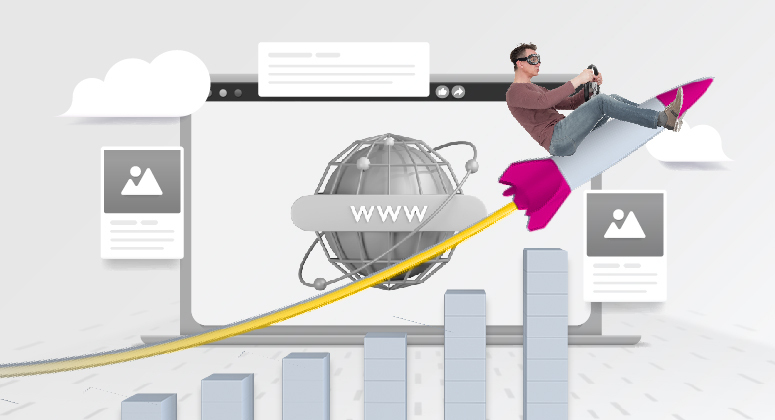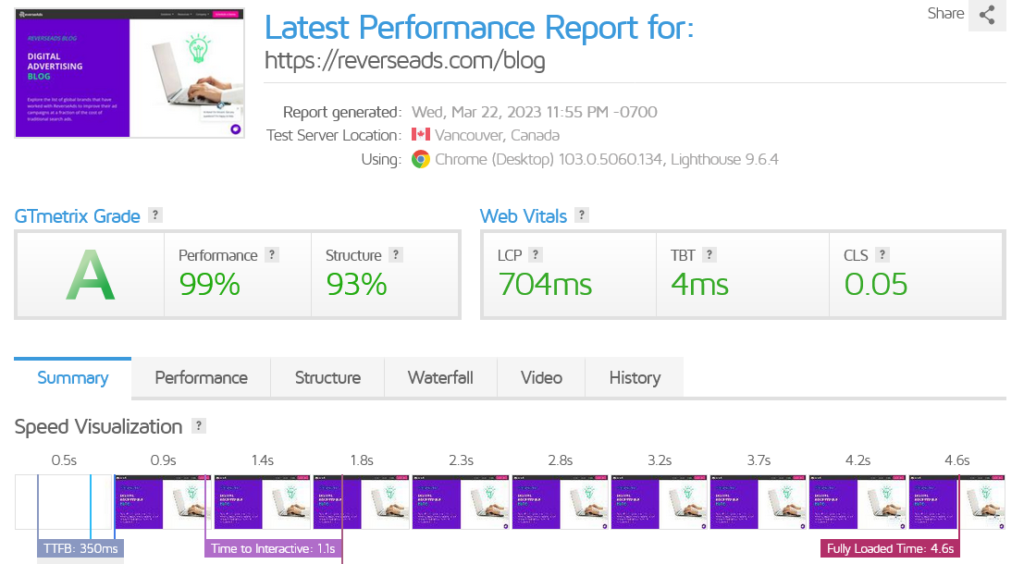Improve Conversion Rates Through Website Speed Optimization

In today’s fast-paced world, people have little patience for slow-loading websites. In fact, research shows that if a website takes longer than 3 seconds to load, visitors are more likely to abandon it and move on to a competitor’s site. This is why website speed is not only important for user experience but also for conversion rates.
Before we dive into the impact of website speed on conversion rates, let’s first understand why website speed is important. Website speed refers to how quickly your site loads and how fast it responds to user requests. A slow-loading site can lead to frustration for users, resulting in a poor user experience. In fact, studies have shown that 53% of mobile users will abandon a site if it takes more than 5 seconds to load.
Google also take website speed into consideration as very important ranking factor. Part of Google’s algorithm called “The Core Web Vitals” algorithm takes into account several metrics that are related to website speed, server response rate, loading times on mobile and desktop, etc… By many this algorithm is referred as “The User Experience” algorithm.

The Impact of Website Speed on Conversion Rates
Now that we understand the importance of website speed, let’s dive into the impact it can have on conversion rates. Conversion rate refers to the percentage of visitors who complete a desired action on your site, such as making a purchase or filling out a contact form.
A slow-loading site can have a direct impact on conversion rates. In fact, studies have shown that a one-second delay in page load time can result in a 7% reduction in conversions. That’s a significant impact on your bottom line.
But why does website speed impact conversion rates? It’s simple. Users expect a fast and seamless experience when visiting a website. If your site is slow to load, users are more likely to abandon it and move on to a competitor’s site. This means that you could be losing potential customers simply because your site isn’t fast enough.
What exactly does the term “conversion rate” refer to in the context of website design?
Essentially, a user “converts” when they perform the desired action that the webpage designers intended for them to take. To illustrate, if an e-commerce page advertising household accessory prompts a user to click the “buy” button and the user actually follows through with a purchase, then they would be considered a conversion. It is worth noting that a conversion does not always require a purchase, as a webpage may have a different goal in mind. Other examples of conversions might include filling out a contact form, participating in a survey, or even simply clicking on a link to another page on the website.
The conversion rate, on the other hand, represents the percentage of visitors to a webpage who ultimately convert. For example, if 100 users view the household accessory page but only 4 of them actually make a purchase, then the conversion rate would be 4%. Conversion rate optimization (CRO) is the process of maximizing this rate as much as possible. Because it is unlikely for a webpage to achieve a 100% conversion rate, there is always room for further optimization. Therefore, CRO is an ongoing effort aimed at enhancing the performance of a webpage by increasing the number of visitors who take the desired action.
Improving Website Speed for Better Conversion Rates
So, what can you do to improve your website speed and ultimately your conversion rates? Here are some tips:
- Optimize images: large image files can slow down your site. It is important to use the correct image resolution, optmize the images for web and preferrably to use new image web formats like WebP
- Minimize HTTP requests: The more HTTP requests your site makes, the slower it will load. Minimize HTTP requests by combining CSS and JavaScript files, reduce number of plugins use (if you are using CMS), load fewer external resources like fonts or tracking scripts.
- Use a content delivery network (CDN): A CDN can help to speed up your site by caching content and delivering it from the server closest to the user.
- Mod_Deflate: Enable Gzip compression on static resources like CSS, HTML and JavaScript. In case of CMS, use caching related plugins that can help with minification and setting the server headers.
- Minimize server response time: A slow server response time can impact your site speed. Often advanced techniques need to be applied to determine what is slowing down the website. It can be code or DB related, as well as slow DNS.
- Avoid videos: self-hosted videos are very heavy and web video player itself is adding extra JavaScript and HTTP requests.
- Large sections: Everything that it is “bigger” than one screen is considered large section. This leads to Large Cumulative Shifts that slows down the webpage loading times dramatically.
Factors Besides Website Speed That Affects Your Conversion Rate
Apart from page performance, there are several other factors that can impact the conversion rate of a website. For instance, the website’s design, layout, action colors, user interface, call to action and user experience (UX) can play a crucial role in shaping visitors’ perceptions of the brand and ultimately influence their purchasing decisions. Other factors that can affect conversion rates include the quality of product descriptions, images, and reviews, the pricing strategy, and the availability of customer support. Additionally, factors such as the website’s credibility, reputation, and trustworthiness can also have a significant impact on conversion rates. At the end it doesn’t only boils down to design and technology, but on business model too.
Not All Pages Hold Equal Significance
It’s a well-known fact that speedy checkout, login, and home pages are critical for enhancing user experience. Subsequently, the loading speed of product category pages has a significant influence on sales, as these pages tend to attract a lot of consumer-intent traffic. Therefore, it’s essential to ensure that all of these pages load quickly to improve sales performance.
In conclusion, website speed is crucial for user experience and can have a direct impact on conversion rates. A slow-loading site can lead to frustration for users and ultimately result in lost customers. By optimizing your site for speed, you can improve user experience, boost your search engine ranking, and increase your conversion rates.





